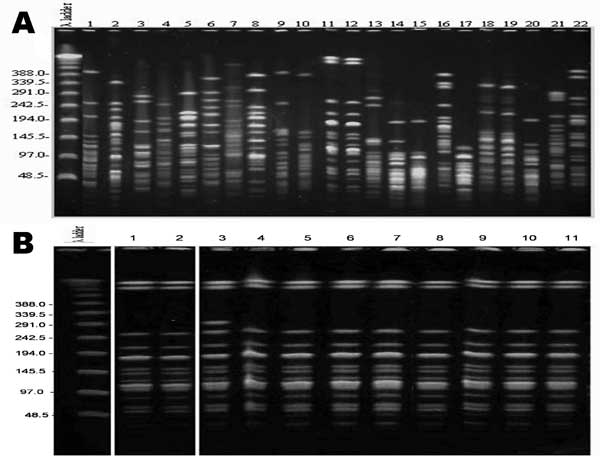Volume 11, Number 7—July 2005
Letter
Cell Phones and Acinetobacter Transmission
Figure

Figure. . Pulsed-field gel electrophoresis of representative Acinetobacter strains. Twenty different clones (panel A) were recovered from cell phones (lanes no. 1, 3, 8–11) and hands of personnel (remaining lanes). Indistinguishable isolates were recovered from cellphones and hand cultures (lanes 11 and 12), and 2 hand cultures (lanes 18 and 19). Both pairs were obtained from different persons. Panel B shows a multidrug-resistant Acinetobacter spp. strain recovered from cell phones (lane 1), personnel hand cultures (lane 2), and patients with skin colonization (lanes 3–11). All isolates are indistinguishable except for no. 3, which is a closely related strain (demonstrating a 1-band difference). Unmarked lanes denote a molecular weight marker. Values on the left are in basepairs.